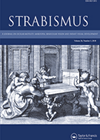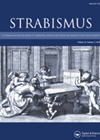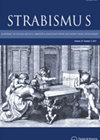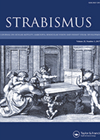
Journal Reviews
Macular measurements for amblyopic eyes
This study aimed to evaluate the macular parameters including foveal avascular zone (FAV) size and vessel density in amblyopia vs fellow eyes. The study included 23 unilateral amblyopia children (9.86 ±3.12 years; 52.2% female) and non-amblyopia control eyes (8.67 ±2.06...
Treatment of amblyopia by Ghanaian optometrists
In Ghana, optometrists are the primary eyecare professional as a first contact for many patients with amblyopia. This study evaluated practice patterns in the management of amblyopia by optometrists in Ghana. The authors conducted a cross-sectional online survey aimed at...
Rural amblyopia prevalence in Iran
The purpose of this study was to estimate the prevalence of amblyopia in subjects aged 3-93 years living in under-served rural areas of Iran. The study was conducted in 2015 in two under-served districts randomly selected from the southwest and...
Age and prevalence of amblyopia in Ghana
The overall aim of this study was to determine the pattern and prevalence of amblyopia and assess the treatment options used in a rural hospital in Ghana. The authors conducted a retrospective study from 2014-2018. Of 12,860 clinical records, 12,602...
Binocular viewing amblyopia therapy
The authors compared conventional occlusion therapy for amblyopia with binocular viewing amblyopia therapy (MFBF) for effects on binocular vision and visual acuity. During MFBF the amblyopic eye perceives the target while the fellow eye perceives the background. Both eyes see...
CAT-QoL questionnaire
The purpose of this study was to use Rasch analysis to inform the refinement of the CAT-QoL amblyopia treatment questionnaire. Of the 342 subjects that were recruited across nine centres, 315 had sufficient clinical data for analysis with RUMM software....
Children’s perspectives of amblyopia treatment
This study measured the impact of amblyopia treatment (patching and atropine) on health-related quality of life from the child’s perspective using the Child Amblyopia Treatment Quality of Life (CATQoL) questionnaire. The study recruited 46 children with no treatment in the...
Quality of life measurement in amblyopia
This study aimed to explore the psychometric properties of the CATQoL instrument and to determine the ability of it to measure the impact of amblyopia treatment from a child’s perspective. A total of 342 children were recruited with analysis presented...
Microtropia as an amblyopia indicator
This study was undertaken to determine if microtropia with identity (straight eye anisometropia) is a reliable indicator of amblyopia following optical correction. This was a retrospective review of 532 children aged four to five years. After two months of glasses...
Amblyopia prevalence in Bulgaria
The purpose of this study was to establish the prevalence of amblyopia in children aged 4 to 10 years in Bulgaria. This cross-section epidemiology study had proportional stratified sample methods across five cities in Western Bulgaria. Of 1675 children, 42...
Electronic treatment reminders
The authors report the results of a small pilot study to measure the use of electronic reminders for children undergoing treatment for amblyopia with patching by assessing changes in visual acuity, reported compliance and ease of use of the reminder...
Comparison of vision screening programmes
The purpose was to examine the treatment that children underwent as a result of being identified with reduced vision at school screening. The level of improvement in vision was identified and the time taken to achieve maximum visual acuity. There...








